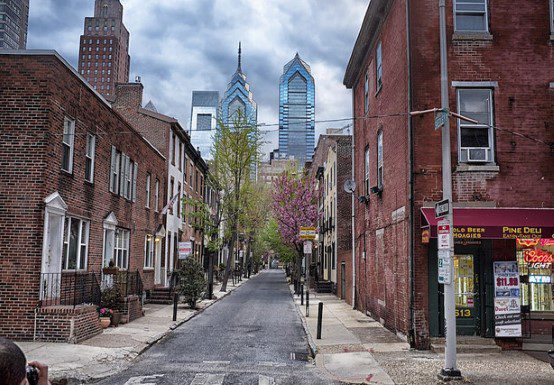Words on the Street

Each week, New Urbs will be regularly collecting the best content we’ve read each week that we didn’t publish—but would have. Read something you think should make the cut? E-mail Jon Coppage or tag @NewUrbs with the link on Twitter.
“Appreciating Small-Scale New Urbanism” via Public Square
Philadelphia is a study of how revitalization is taking place on a 19th Century street grid, shaped by regulations that, while imperfect, at least recognize the importance of walkability and the public realm. With its rowhouse and warehouse neighborhoods, Philadelphia may be particularly friendly to small urbanism and mid-range densities. Yet this kind of mix is happening in cities and towns, to a lesser or greater degree, all across America. While we write about the larger projects, let’s appreciate how much small-scale, infill development is helping to transform our cities.
“As Cars Return to Main Street, ‘Difference is like night and day’” via Buffalo News
In the early 1980s, the downtown stretch of Main became a pedestrian mall and a free-fare zone for the new Metro Rail system, which arrived two years later. But instead of reversing downtown’s fortunes, the removal of cars may have hastened the decline. The long construction period doomed many of the street’s businesses, and the restricted access to Main Street contributed to diminished occupancy and development, especially for first-floor storefronts.
“Learning Virtue Through Public Transit” via Strong Towns
Sharing bus seats with strangers thrusts me into a form of the public square, which can be uncomfortable and ripe for opportunity all at the same time as I encounter a diversity of people. It strips me of my (perceived) independence. It forces me to rely on and trust other people and others’ schedules in order to get to my destination. It is humbling. Virtue is not usually one of the benefits touted by supporters of public transit, yet it can be a valuable outcome of the system.
The urbanism of Trump the Father in “The Tudor Plain” via Urban Omnibus
[Fred] Trump’s houses were cozy, well made, and — more than anything — affordable even to working-class families. He reduced construction costs by using the same economies of scale that made the Model T automobile so inexpensive. Known in the industry as “the Henry Ford of housing,” he applied techniques of mass production to home construction a full decade before William Levitt became famous for doing so at Levittown. Levitt’s subdivisions were studiously suburban and designed for motorists. Trump’s row house developments accommodated cars — most had garages tucked below grade in front or rear — but not at the expense of a picturesque, pedestrian-friendly streetscape. Trump was a city builder first and foremost, and his largest works were always close to rapid transit.
Comments